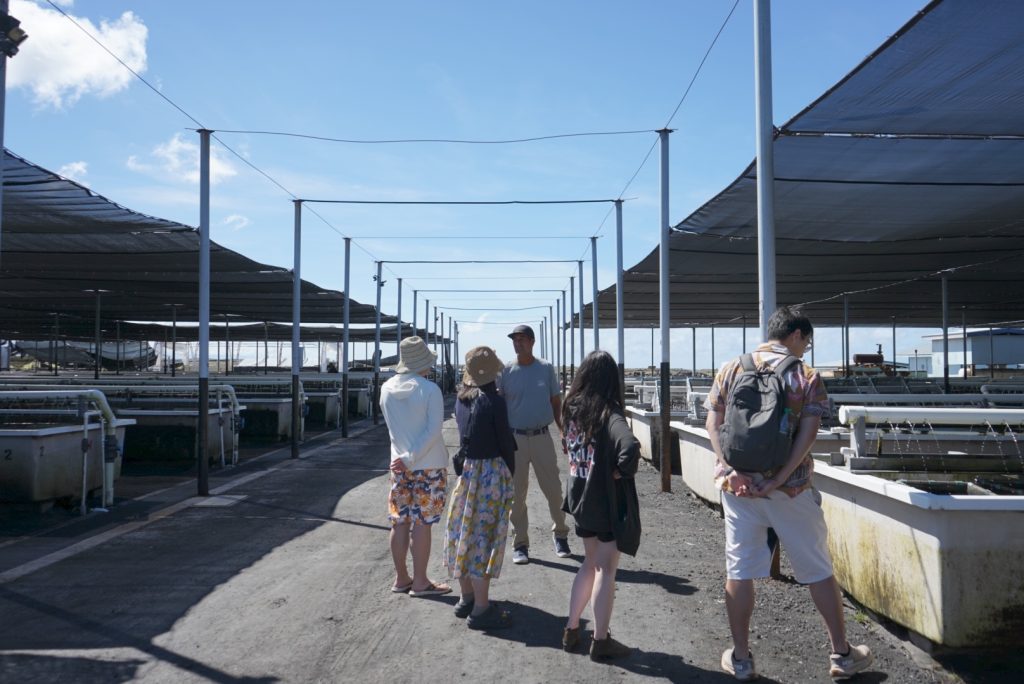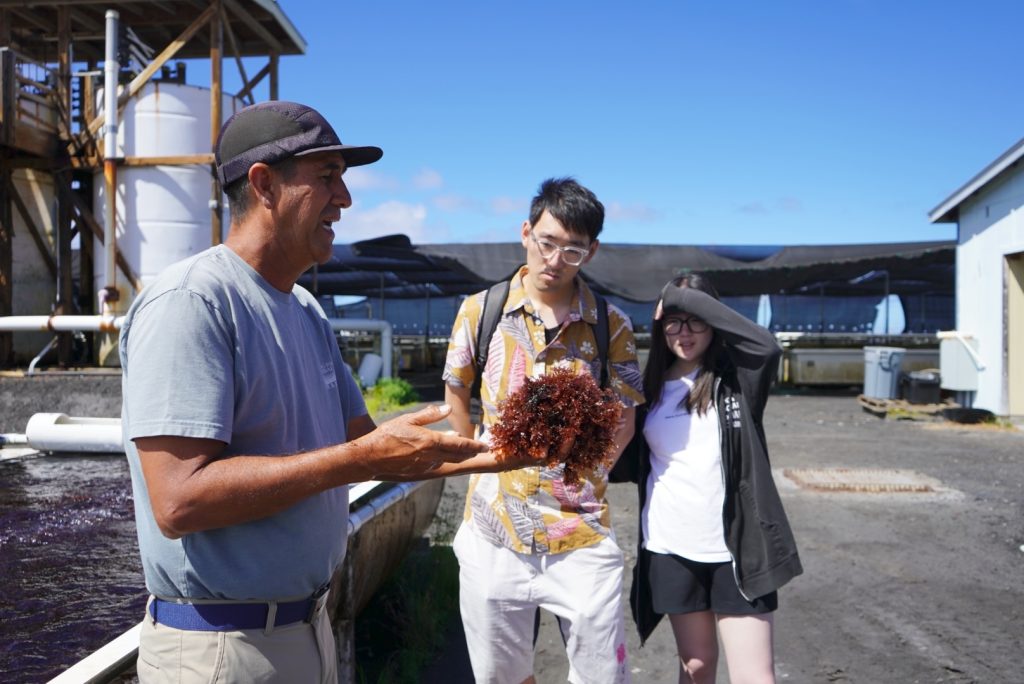Aquafarm on Big Island raising tasty abalone with sustainable power of deep ocean water

Four visitors at Big Island Abalone watched curiously as the aquafarm’s tour guide Carlos Kennedy showed them a slug-like creature living in a half shell.
“It’s a little alien form of life in your hands,” Kennedy said about the ezo abalone.
Last week, as he walked the guests through the 10-acre farm in Kailua-Kona on Hawai‘i Island, Kennedy explained how the operation sustainably raises and harvests the gastropod mollusk as well as the seaweed it eats.
Five of the acres are shaded to house the abalone and the other five acres encompass tanks where the seaweed is grown.
“It’s the future of everything,” Kennedy said.
Big Island Abalone was founded in 1988 and has been owned by KOWA since 2018. Now, it annually produces 100 tons of the delicacy, making it one of the largest commercial operations in the United States.
The aquafarm is among several businesses within the Hawai‘i Ocean Science and Technology Park, located off Makako Bay Drive, about 10 minutes from Ellison Onizuka Kona International Airport along the Kona Coast. All the businesses at the park are powered by the Natural Energy of Hawai‘i Authority, which has three sets of pipelines that deliver deep sea water from up to 3,000-foot depths as well as surface seawater.
Owners of the aquafarm spend thousands of dollars every month for access to the deepwater pipe that pumps clean, cold and deep ocean water to the facility. This water is used to fill the many tanks that house the abalone.

Walking around the grounds of the farm, one can hear the constant sound of running water. About 10,000 gallons are moving through the operation every minute, which Kennedy calls an “extension of the sea.”
The water is naturally treated as it filters through lava rock. The deep and surface waters that are brought up from the ocean are blended at the farm to fill the tanks. Abalone survives in 60 degree water, and the seaweed in 50 degrees.
Kennedy also said the farm goes through 1,500 pounds of seaweed each day to feed the hungry abalone.
Over harvesting throughout the years has decimated the mollusk populations in the wild around the world, with the white abalone and black abalone listed under the Endangered Species Act, according to the National Oceanic Atmospheric Administration.
While other species of abalone are doing better in the United States, shellfish still haven’t recovered enough to allow for commercial harvesting.
The aquafarm has created a sustainable source of seafood, providing fresh abalone to the Asia and North America markets without harming wild populations.
The Kona abalone comes from the Japanese ezo abalone strain, known as the most precious species in Japan. Some of Big Island Abalone’s delicacy has found its way to tables at five-star restaurants in New York and eateries in Las Vegas, according to the company’s website.
Ben Di, 28, of California, said he signed up for the tour after seeing it on social media: “I eat abalone, and I wanted to see where it comes from.”
Walking through the rows of abalone-filled tanks, Di was impressed with the scope of the farm which had about 400 tanks stretched across various areas of the property, housing 4 million mollusks at various stages of growth. Each tank has a constant flow of seawater flowing into it.
There is the nursery, an area for “intermediates” or 4 months old and housing for the “juveniles” that are 1 year old. Next, they move to the harvest section.
Di was most surprised to learn the color of the abalone shell depends on what it eats. At Big Island Abalone, they are the shade of blackish-red for the dulse seaweed, which initially came from Oregon but now is grown in open tanks filled with seawater exposed to the full Kona sun.
“When I eat it the next time I’ll think about what the abalone ate,” Di said.
At the end of the tour, guests sampled abalone from the farm, either steamed on a half shell or the shellfish canned.
The farm not only educates the public on how abalone is sustainably raised and harvested but there’s a food truck onsite that offers visitors a chance to experience the food.
Naoki Ando, manager at Big Island Abalone, said the farm also offers a space where visitors can barbeque their own seafood purchased from the farm or other businesses in the park. Click here for the menu.
For the past two years, the farm has provided a space where people can purchase abalone and other seafood from the area and barbecue on a grill. The farm is in the process of upgrading the grilling area with a covered pavilion.
For more information about Big Island Abalone, click here.











